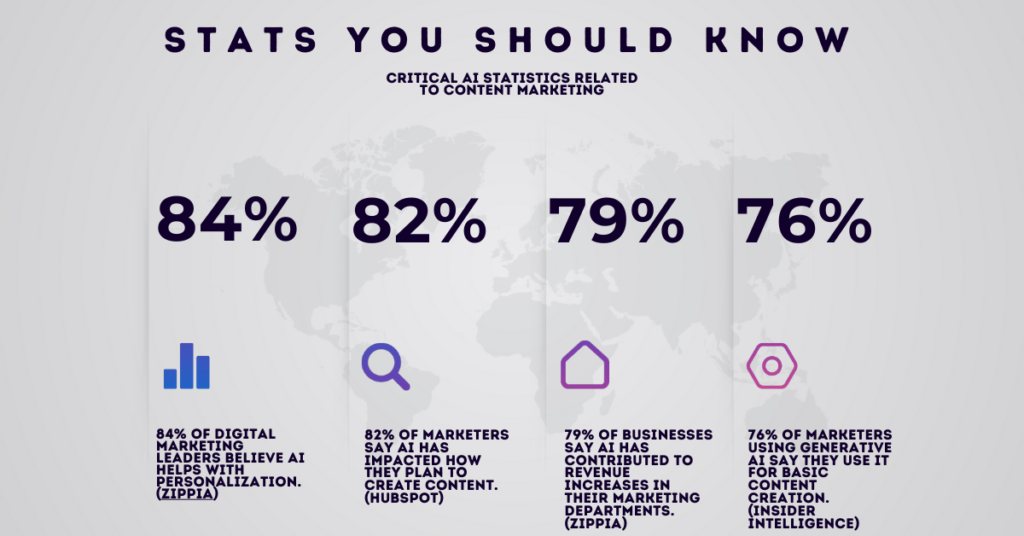Social Media and Content Marketing: What Is Your Favourite
In digital marketing, social media, content marketing, and analytics are pivotal strategies for businesses aiming to engage, expand, and look at their audience reach.
Understanding the symbiotic relationship between these elements, help, and cost, is crucial in today’s competitive landscape.
This blog post delves into the nuanced interplay of social media and content marketing.
It sheds light on their collaborative potential to elevate brand visibility, foster customer relationships, drive conversions, and help.
From leveraging compelling storytelling on various platforms to harnessing data-driven insights for targeted content creation, this discussion will explore actionable tactics to fortify a brand’s online presence and help.
Social Media vs. Content Marketing

Unique Aspects
Social media involves creating, sharing, and engaging with content on social platforms like Facebook, Instagram, Twitter, and LinkedIn.
It’s about building relationships with an audience through interactive posts, images, videos, and stories.
On the other hand, content marketing focuses on creating valuable and relevant content to attract a specific audience.
This can be in the form of blog posts, articles, infographics, or e-books.
Social media is more about immediate interaction and engagement with the target audience through likes, comments, or shares.
Conversely, content marketing aims to provide long-term value by educating or entertaining the audience without directly promoting a product or service.
Distinct Purposes
Social media’s primary purpose is to connect people socially while allowing businesses to engage with their customers in real-time conversations.
For instance, Facebook, as a social platform, allows users to share personal updates but also enables brands to interact directly with their followers through comments and messages.
On the contrary, content marketing’s primary goal is to provide helpful information that addresses specific pain points of potential customers without overtly selling them anything.
For example, a company might create blog posts addressing common problems its target market faces without explicitly promoting its products.
The Basics of SEO Content Writing in Marketing

Incorporating Keywords Effectively
SEO content writing is crucial for businesses to ensure their original content reaches the right audience.
By incorporating relevant keywords, companies can improve online visibility and attract more potential customers.
For instance, a company selling eco-friendly products may use keywords like “sustainable living” or “environmentally friendly” to target consumers interested in such products.
Practical keyword usage involves seamlessly integrating them into the content marketing material without compromising quality.
This means using keywords naturally within the text while maintaining readability and relevance.
Overusing or stuffing keywords can negatively impact the user experience and even lead to search engine penalties, so it’s essential to strike a balance.
When creating content for social media, understanding how users search for information related to a business’s offerings is critical.
By conducting thorough keyword research and analysis, companies can identify popular search terms and phrases their target audience uses.
Incorporating these insights into social media posts, blogs, or website copy helps increase the chances of appearing in relevant search results.
The Role of Meta Descriptions
Meta descriptions play a significant role in SEO content writing as they provide concise summaries of web pages on search engine results pages (SERPs).
Crafting compelling meta descriptions with relevant keywords can entice users to click through to the website.
For example, an e-commerce site offering organic skincare products might include phrases like “natural beauty solutions” or “cruelty-free cosmetics” in its meta descriptions.
Furthermore, well-crafted meta descriptions enhance click-through rates and overall SEO by signaling relevancy to search engines.
When users find what they’re looking for based on the meta description and positively engage with the page’s content, it sends positive signals about its quality and relevance.
Goals and Roles of Content in the Marketing Funnel

Aligning Content
Content marketing is crucial in guiding consumers through the various marketing funnel stages.
At the top of the funnel, where consumers are just becoming aware of a brand or its products, content should focus on providing valuable information without being overly promotional.
For example, blog posts, social media content, and informative videos can attract potential customers by addressing their pain points or interests.
At the middle of the funnel, as leads consider making a purchase decision, content becomes more targeted toward converting these leads into customers.
This is where social media platforms come into play with engaging posts highlighting product benefits and customer testimonials.
Email campaigns with personalized content can help nurture these leads further down the sales funnel.
Converting Leads
One significant objective of content marketing is to convert leads into paying customers by strategically using different types of content at each stage.
For instance, offering downloadable resources such as e-books or whitepapers in exchange for contact information can help capture leads’ interest and move them closer to making a purchase decision.
Furthermore, leveraging user-generated content on social media, such as reviews and testimonials from satisfied customers, serves as powerful social proof that positively influences potential buyers’ decisions.
By showcasing real-life experiences shared by existing users across various platforms like Instagram stories or Facebook posts, brands can effectively influence purchasing behavior.
Nurturing Customer Relationships
Another vital role content marketing plays, especially on social media, is nurturing relationships with existing customers.
Engaging and interactive content encourages repeat purchases while fostering brand loyalty among current consumers.
Brands often utilize contests or polls on social platforms to keep their audience engaged while gathering valuable feedback about their products or services.
Moreover, creating behind-the-scenes content showing how products are made or giving a glimpse into company culture helps humanize brands and strengthens emotional connections with their audience.
This type of genuine engagement fosters long-term relationships between brands and consumers.
Effective Social Media Content Strategy

Importance of Visual Content
Visual content such as pictures and videos can captivate people’s attention on social media platforms.
A compelling image or an engaging video can be more effective than plain text.
Many people are visual learners naturally drawn to pictures and videos when scrolling through their social media feeds.
Utilizing visually appealing content can lead to higher engagement rates on social media.
Posts with eye-catching images receive more likes, comments, and shares than those without visuals.
For instance, a study found that tweets with images received 150% more retweets than tweets without images.
Therefore, incorporating visual elements into a social media content strategy is essential for increasing shares and expanding the reach of posts.
Visuals also play a crucial role in conveying information quickly and effectively. Today, where attention spans are limited, infographics or other visual aids can help bring complex messages in a simple and digestible format.
Tips for Leveraging Visual Content
To effectively leverage visual content for social media engagement, businesses must ensure that their visuals align with their brand identity while resonating with their target audience.
Creating visually consistent content across all platforms is vital so followers can easily recognize the brand behind the posts.
Moreover, utilizing diverse types of visual content is crucial in maintaining audience interest.
This includes sharing static images and dynamic video content like product demonstrations or behind-the-scenes glimpses into the company culture.
When crafting visual content for social media marketing purposes, it’s essential to consider what will capture attention and resonate emotionally with your target audience – this leads us directly to our next point: Utilizing Storytelling in Social Media Content Strategy.
Choosing Content Types for Social Media Platforms
Tailoring Content Types
Choosing the suitable types of content for each platform is crucial. Different social media platforms have distinct user demographics and preferences, requiring tailored content types to engage the audience effectively.
For example, Instagram users often respond well to visually appealing posts such as high-quality images or short videos, while LinkedIn users may prefer more professionally oriented articles and infographics.
Creating diverse content types allows marketers to cater to various audiences across different platforms.
By offering a mix of visual, written, and interactive content, they can maximize engagement and reach a broader range of potential customers.
Utilizing Video Content
Video content has become increasingly popular across various social media platforms due to its engaging nature.
Marketers leverage this trend by creating compelling video content that resonates with their target audience.
For instance, on Facebook, videos receive higher organic reach than other posts. This encourages businesses to produce more video-based content for this platform.
Furthermore, TikTok’s popularity has led many brands to explore short-form video marketing strategies targeting younger demographics.
These videos often include challenges or trends related to the brand’s products or services, which can quickly go viral when executed successfully.
Creating Shareable Infographics
Another effective social media and content marketing strategy involves creating shareable infographics tailored for specific platforms like Pinterest and Twitter.
Infographics are visually appealing and offer valuable information in a concise format – making them highly shareable on social media.
For example, a company selling eco-friendly products could create an infographic showcasing environmental statistics or tips on sustainable living targeted at environmentally-conscious Pinterest users seeking informative yet visually pleasing content.
Integrating SEO Content with Social Media Tactics
Incorporating Keywords
Incorporating relevant keywords into your posts can significantly boost your search engine optimization (SEO) efforts.
By including keywords naturally within your social media content, you can enhance the visibility of your posts when users search for related topics online.
For instance, if you’re promoting a blog post about healthy recipes, ensure that the post includes relevant keywords like “healthy eating,” “nutritious meals,” or “cooking tips.”
Utilizing hashtags is another effective way to improve the discoverability of your social media content.
When using platforms like Instagram and Twitter, incorporating popular and niche-specific hashtags can help expand the reach of your posts beyond just your followers.
For example, if you’re sharing a blog post about travel tips, including trending hashtags such as #Wanderlust or #TravelTuesday can attract a broader audience interested in travel-related content.
Cross-Promoting Blog Posts
Cross-promoting blog posts on various social media platforms is essential for maximizing exposure and driving traffic to your website.
When you share a new blog post on platforms like Facebook, Twitter, Instagram, LinkedIn, and Pinterest, you increase its visibility among different audiences with varied interests.
This helps broaden your reach and encourages engagement across multiple channels.
Deciding Between Content Marketing and Social Media
Long-term Value
Content marketing offers long-term value through evergreen content that continues to drive traffic and engagement over time.
Unlike social media posts, which have a short lifespan, content marketing materials such as blog posts, videos, and infographics can remain relevant for months or even years.
Content marketing also provides an opportunity to showcase expertise and thought leadership within a particular industry or niche.
For instance, a company specializing in sustainability might create informative blog posts about eco-friendly fabrics or produce engaging videos on ethical manufacturing practices.
This type of content educates the audience and establishes the brand as a knowledgeable authority in its field.
In contrast, while social media platforms are excellent for immediate reach and interaction with audiences, their impact often needs to be addressed.
A tweet or Facebook post may receive high engagement initially but quickly gets buried under newer updates from other users.
Search Engine Visibility
One significant strength of content marketing is its ability to improve search engine visibility through optimization (SEO).
Businesses can attract organic traffic from search engines like Google by creating high-quality content optimized with relevant keywords and phrases high-quality content optimized with relevant keywords and phrases; companies can attract organic traffic from search engines like Google.
For example, an e-commerce store selling fitness apparel can publish SEO-optimized blog posts about workout tips or healthy recipes using their products.
When users search for related topics online, these articles have the potential to appear on the first page of search results—driving valuable traffic to the website without ongoing ad spend.
On the other hand, while social media has its benefits regarding user engagement and community building, it doesn’t directly contribute to organic search visibility.
Posts like Instagram or Twitter only typically rank in traditional searches if they go viral outside those platforms.
Immediate Engagement
Social media excels at providing immediate engagement opportunities with followers through likes, comments, shares, and direct messages.
Brands can interact directly with customers by responding promptly to queries or feedback shared via social channels—a level of interaction that’s harder to achieve through content marketing efforts.
For instance,
- A clothing brand hosting a flash sale exclusively announced on Instagram stories.
- A local bakery is sharing behind-the-scenes footage via Facebook Live. These real-time interactions foster strong connections between brands and consumers that aren’t easily replicated through static content alone.
Long-term vs. Short-term Marketing Strategy Results
Sustainability of SEO-driven Content Marketing
SEO-driven content marketing focuses on creating valuable, relevant content to attract and retain a clearly defined audience.
This approach emphasizes long-term results by improving search engine rankings and driving organic traffic.
By consistently producing high-quality content optimized for search engines, businesses can establish themselves as authoritative sources in their industry.
Over time, this can increase brand visibility and credibility, resulting in sustainable advantages such as higher conversion rates and customer retention.
Content marketing’s emphasis on providing valuable information aligns with how modern consumers conduct research online before purchasing.
For instance, a company that regularly publishes informative blog posts addressing common pain points within its niche can gradually build trust among potential customers searching for solutions.
As a result, the business gains exposure to new audiences while nurturing relationships with existing ones.
In addition:
- Cost-effective over time
- Builds brand authority
Immediate Impact of Social Media Campaigns
Conversely, social media allows businesses to engage with their audience instantly through interactive posts, stories, and live videos.
While content marketing aims for sustained growth over time, social media delivers immediate results, including increased website traffic or direct sales from promotional posts.
For example:
- A clothing brand running an Instagram ad campaign showcasing its latest collection may experience many website visits during the promotion period.
- A restaurant promoting a limited-time offer exclusively through Facebook may see a surge in reservations or orders during the active campaign.
The real-time nature of social media enables brands to quickly connect with their target demographic and generate buzz around specific events or promotions without requiring extensive planning or long-term commitment.
Weighing Long-term Brand Building Against Short-term Engagement
When evaluating the benefits of both strategies, it’s essential to consider whether short-term engagement from social media efforts translates into lasting relationships with customers compared to the gradual but steady impact of content marketing efforts.
Pros and cons:
- Content marketing: Long-lasting impact but requires patience
- Social media: Immediate engagement but fleeting effects
Analyzing the Effectiveness of Integrated Marketing Approaches
Evaluating SEO and Social Media Synergy
Integrating search engine optimization (SEO) focused content with social media tactics can yield significant benefits.
By analyzing the impact of this integration, businesses can gain valuable insights into their online presence.
For instance, they can measure how well their SEO-focused content drives organic search results and how effectively their social media efforts engage with the target audience.
This integrated approach allows companies to evaluate the synergy between organic search results from SEO and engagement metrics from social media.
By assessing these two key elements, organizations can understand how well their online content resonates with potential customers across different platforms.
For example, a company might find that certain types of content perform exceptionally well on social media but do not translate into high organic search rankings.
This insight could prompt them to adjust their content strategy to better align with both channels.
Furthermore, by combining data from both SEO and social media efforts, businesses can assess the overall performance of their integrated marketing strategies more comprehensively.
They can gain a holistic view of how these two components work hand in hand to elevate brand visibility and reach.
This analysis enables companies to decide where to allocate resources for maximum impact.
Leveraging Data for Informed Decisions
By leveraging analytics tools that provide comprehensive insights into website traffic, user behavior, and communication on various social platforms, businesses can access rich data that helps them gauge the effectiveness of their integrated marketing approaches.
These tools enable companies to conduct audits of their digital footprint by evaluating which pieces of content are gaining traction through organic searches and which generate buzz on social media.
Moreover, research conducted by organizations reveals that an integrated approach offers numerous benefits, such as increased website traffic from both sources – organic search results driven by optimized content and referrals from engaging posts on social platforms.
It has been found that combining these strategies often leads to higher conversion rates due to enhanced brand visibility across multiple touchpoints.
Conclusion
Integrating social media and content marketing is crucial for a comprehensive digital marketing strategy.
Understanding the distinct roles of each, crafting effective strategies, and analyzing their combined impact are essential for success.
By aligning SEO content with social media tactics, businesses can optimize their online presence and reach their target audience more effectively.
Choosing the right content types for different platforms and balancing long-term and short-term marketing goals are also crucial for marketers.
In conclusion, businesses should prioritize integrating social media and content marketing to maximize their digital outreach.
By analyzing the effectiveness of their strategies and staying updated with industry trends, they can continuously refine their approach for optimal results.
Frequently Asked Questions
What is the difference between social media and content marketing?
Social media focuses on engaging and interacting with an audience through platforms like Facebook, Twitter, and Instagram.
Content marketing involves creating and sharing valuable content to attract and retain a specific audience.
How does SEO content writing contribute to marketing strategies?
SEO content writing helps improve a website’s visibility in search engine results by incorporating relevant keywords into high-quality content.
This drives organic traffic, increases brand awareness, and ultimately boosts conversion rates.
What are the objectives of integrating SEO content with social media tactics?
Integrating SEO content with social media aims to enhance brand visibility across various channels, drive website traffic from social platforms, improve search rankings through engagement signals, and establish authority within the industry.
How can businesses decide between prioritizing content marketing or focusing on social media?
Businesses should consider their long-term goals; if they aim for sustainable growth through building trust and authority in their niche, they may prioritize content marketing.
Focusing on social media might be more suitable if immediate engagement is crucial for short-term gains.
Why is it important to analyze the effectiveness of integrated marketing approaches?
Analyzing the effectiveness of integrated marketing approaches provides insights into which strategies yield the best results.
It allows businesses to refine their tactics based on data-driven decisions, optimize resource allocation, and maximize ROI for future campaigns.






